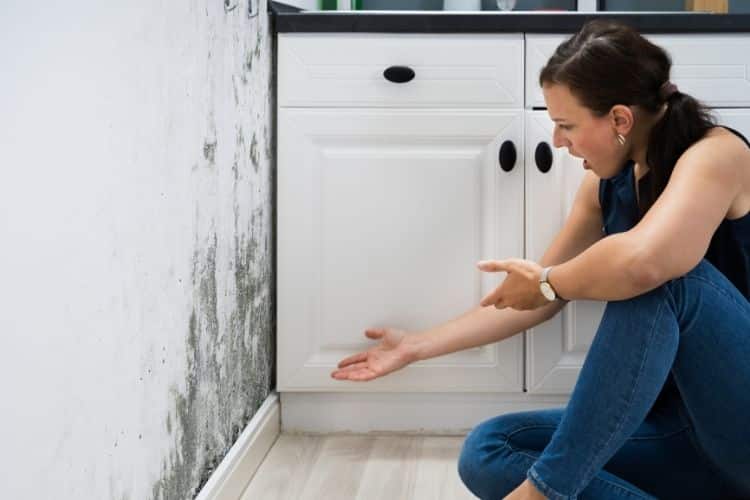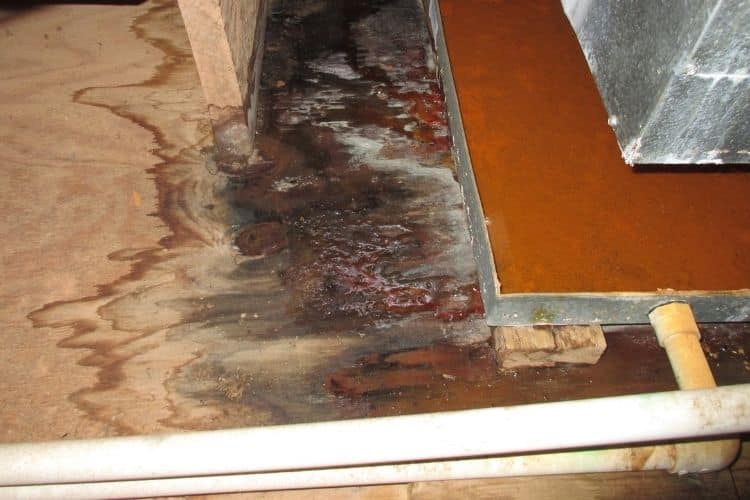Water damage and mold growth are two interconnected challenges that homeowners face. When water infiltrates our living spaces, it creates an ideal breeding ground for mold, which can lead to various health issues and property damage.
In this blog post, we will explore the link between water damage and mold growth, the importance of prevention, the steps involved in water damage restoration, and practical tips to safeguard your home from water-related issues.

Understanding Mold and its Relationship to Water Damage
Water damage creates a cascade of events that promotes mold growth. When materials like drywall, carpet, or wood become wet, they retain moisture and become a food source for mold. The combination of moisture and organic matter fuels the growth and proliferation of mold colonies.
As mold grows, it releases tiny spores into the air. These spores can spread throughout your home, settling on other surfaces and initiating new mold colonies. Additionally, mold produces volatile organic compounds (VOCs) that can cause allergic reactions, respiratory problems, and other health issues, particularly for individuals with compromised immune systems.
The Importance of Preventing Water Damage
Preventing water damage is crucial to minimizing the risk of mold growth in your home. Here are some key prevention strategies:
- Regular Maintenance: Stay proactive by inspecting your home regularly for any signs of water damage, such as leaks or moisture buildup. Check your roof, plumbing fixtures, and appliances for any potential issues. Address these issues promptly to prevent further damage.
- Proper Ventilation: Ensure adequate airflow and ventilation in areas prone to moisture, such as bathrooms, kitchens, and basements. Use exhaust fans or open windows to reduce humidity levels and promote proper drying.
- Proper Drainage: Make sure your gutters and downspouts are clear of debris and functioning correctly. Redirect water away from your foundation to prevent water accumulation and potential water damage.
- Prompt Repairs: Fix any plumbing issues, roof leaks, or structural problems as soon as they are detected. Don’t let small problems escalate into larger, costlier issues.
- Insulation and Waterproofing: Insulate pipes in cold areas to prevent them from freezing and bursting. Consider waterproofing basements and crawl spaces to minimize moisture infiltration.
By implementing these preventive measures, you can significantly reduce the risk of water damage and subsequent mold growth in your home. Regular maintenance and prompt repairs are key to identifying and addressing potential water-related issues before they escalate.
The Process of Water Damage Restoration
If water damage does occur, it’s essential to address it promptly to prevent further damage and mold growth. Water damage restoration typically involves the following steps:
- Assessment: A professional restoration team will assess the extent of the water damage, identify affected areas, and develop a restoration plan tailored to your specific situation.
- Water Extraction: The team will remove standing water using specialized equipment and dry out the affected areas using high-powered fans and dehumidifiers. Thoroughly drying the space is essential to prevent further mold growth.
- Mold Inspection: A thorough inspection will be conducted to identify any existing mold growth. Samples may be taken for testing to determine the type and severity of the mold infestation. This step helps the restoration team determine the appropriate remediation strategy.
- Mold Remediation: If mold is present, the restoration team will initiate mold remediation procedures. This involves safely removing and disposing of contaminated materials and treating affected areas to eliminate mold growth. They will employ industry-standard practices to ensure effective mold removal and prevent its recurrence.
- Repair and Restoration: Once the water and mold issues are resolved, the restoration team will repair or replace damaged materials, ensuring that your home is restored to its pre-damage condition. This may include repairing drywall, replacing flooring, or restoring any structural damage.
- Prevention Measures: As part of the restoration process, the team may recommend additional prevention measures to safeguard your home against future water damage. This may include installing sump pumps, improving drainage systems, or reinforcing vulnerable areas.
Conclusion
Water damage and mold growth are closely intertwined, with water intrusion providing a conducive environment for mold infestations. By understanding the relationship between water damage and mold growth, implementing effective prevention strategies, and promptly addressing water damage through professional restoration processes, you can protect your home and maintain a healthy living environment. Remember, prevention is key, and timely restoration can save you from costly repairs and potential health hazards caused by mold growth. Stay vigilant, address water-related issues promptly, and seek professional assistance when needed to ensure the long-term safety and well-being of your home and family.




